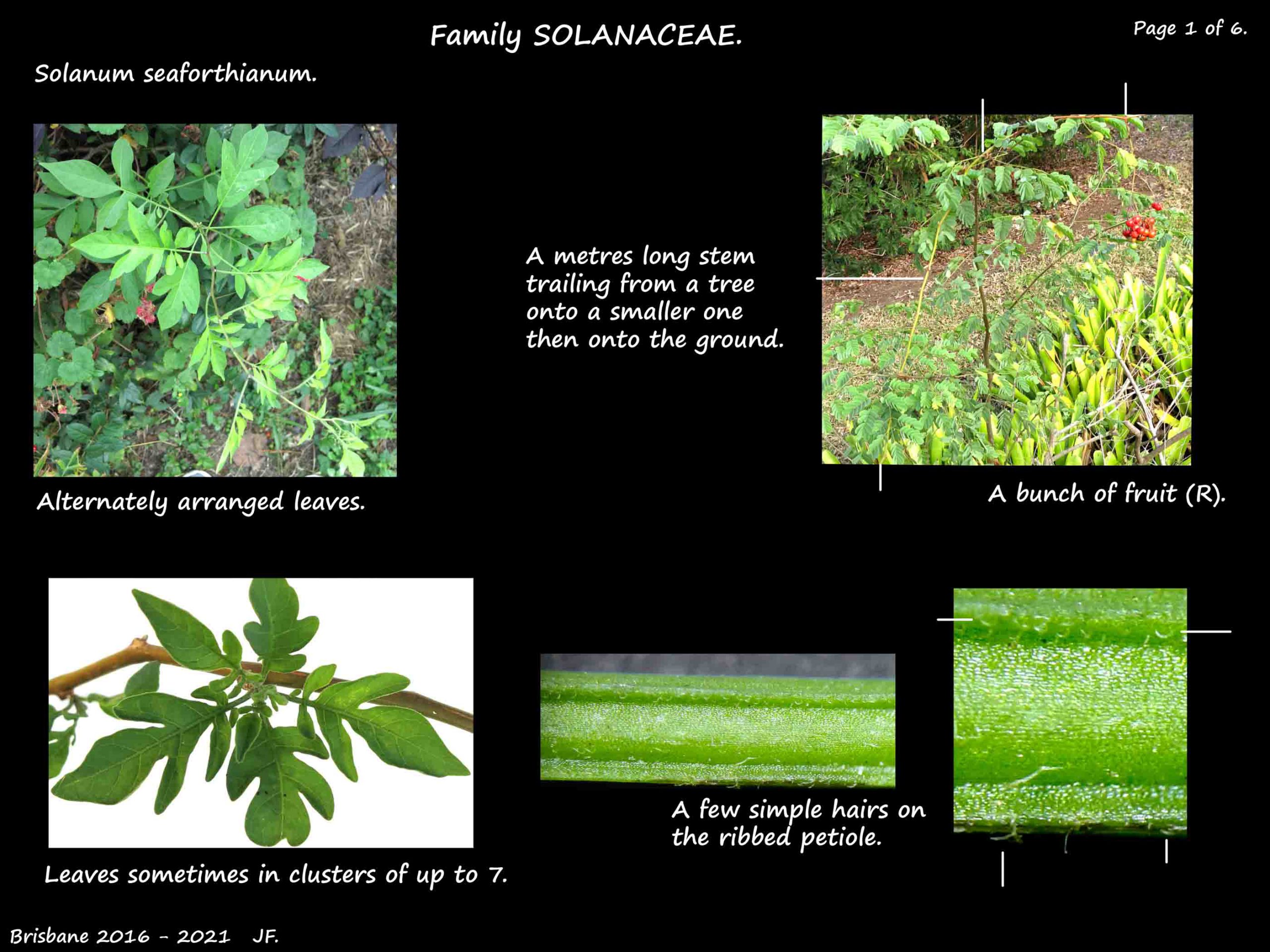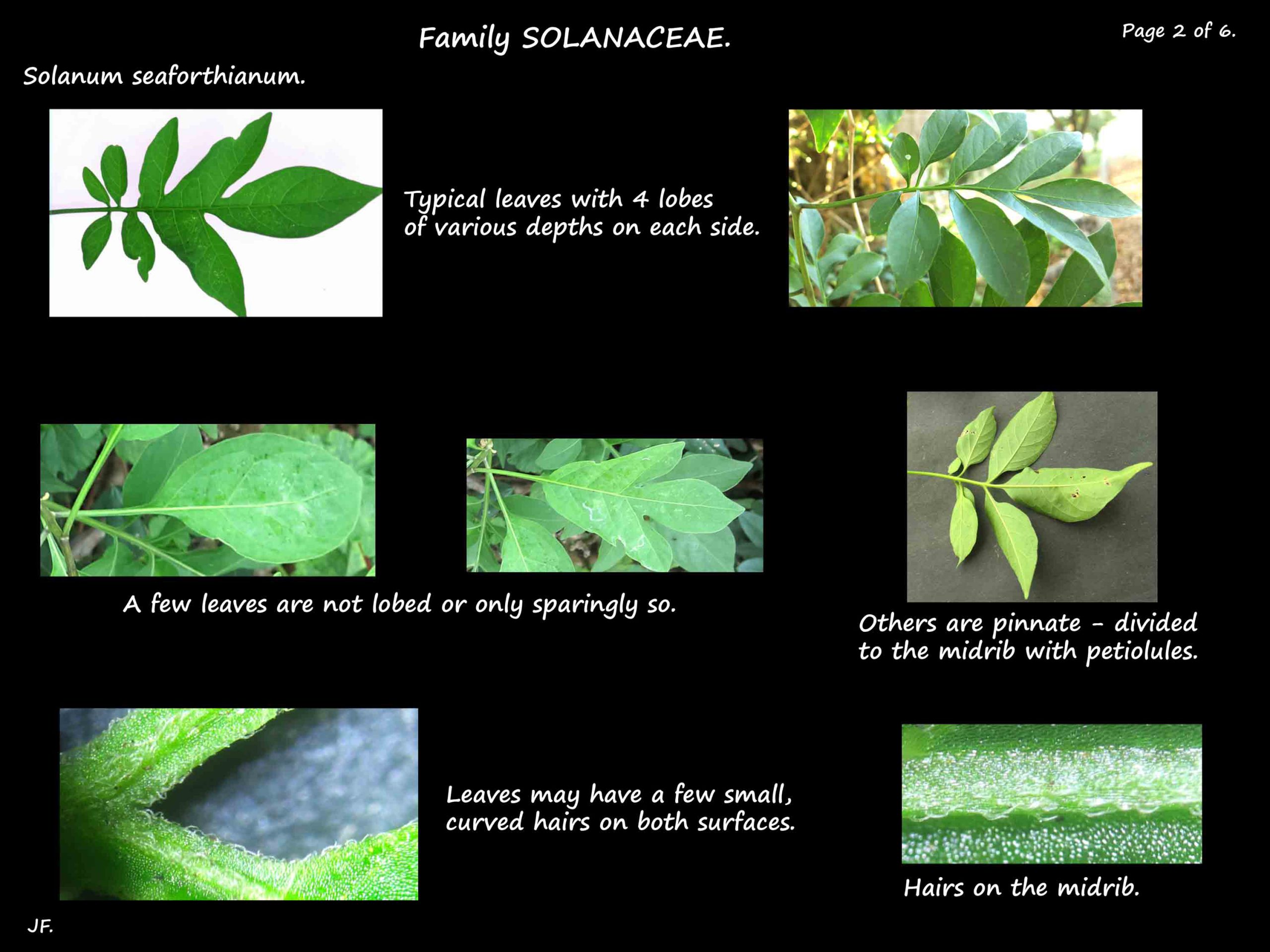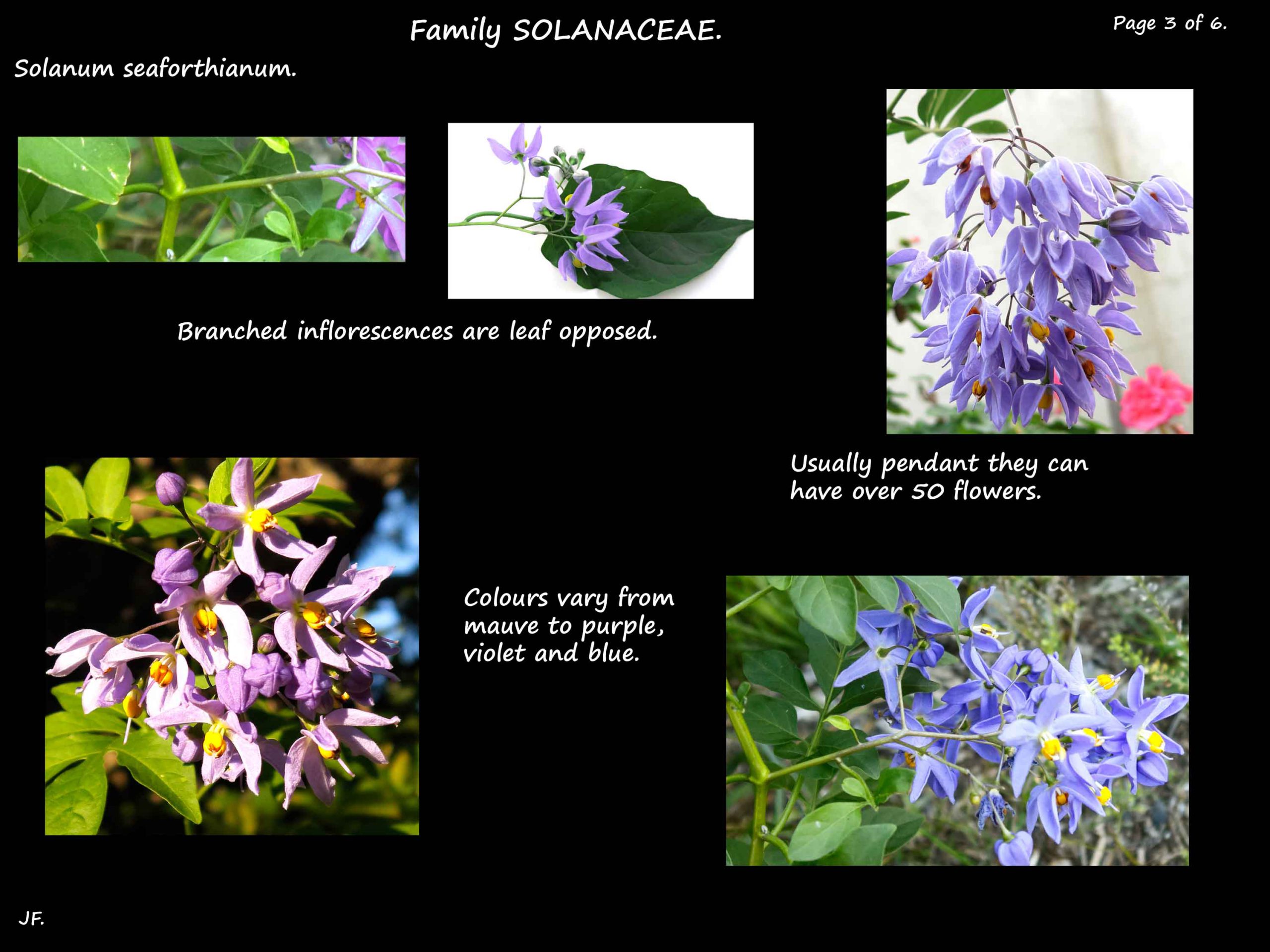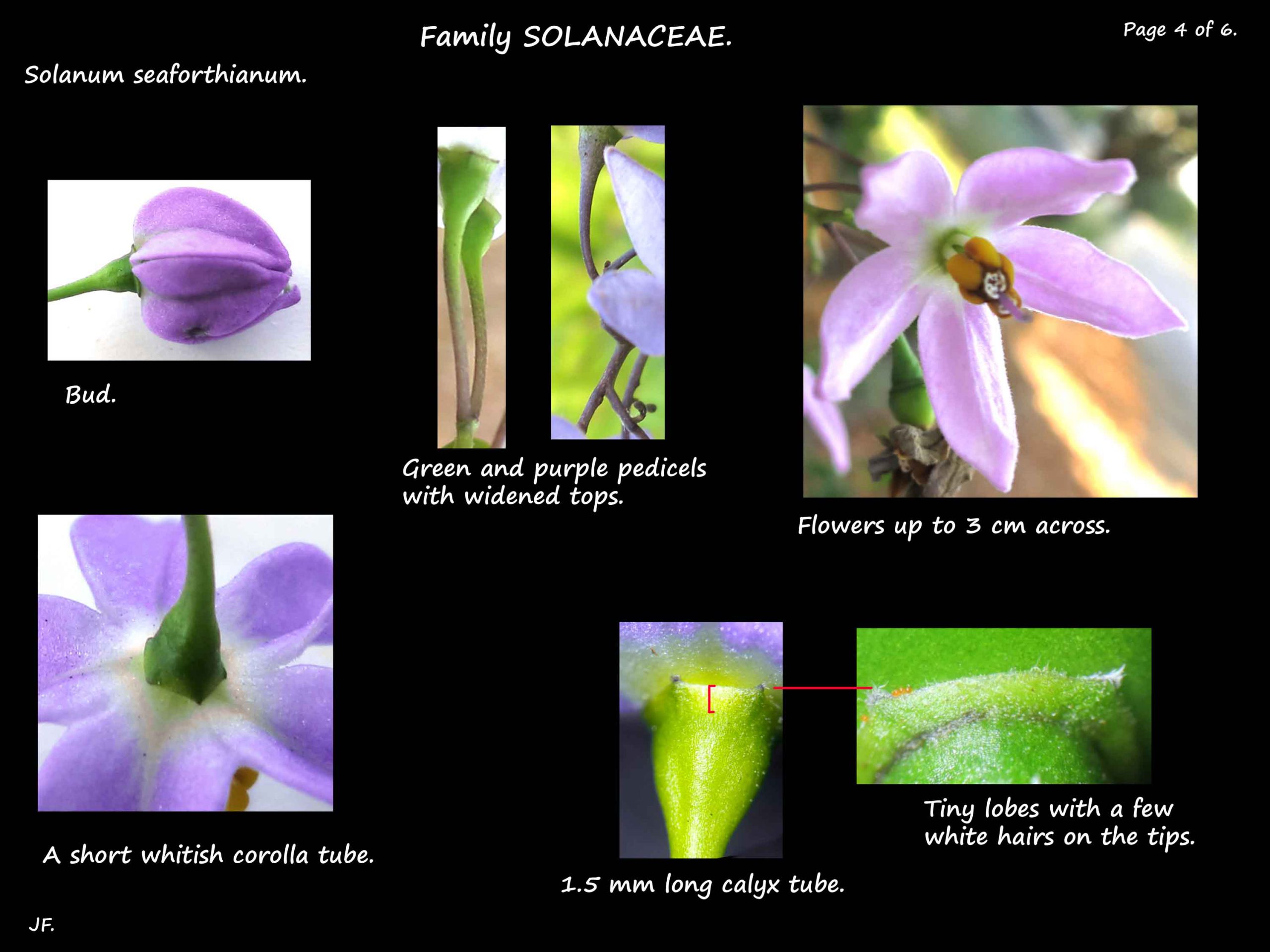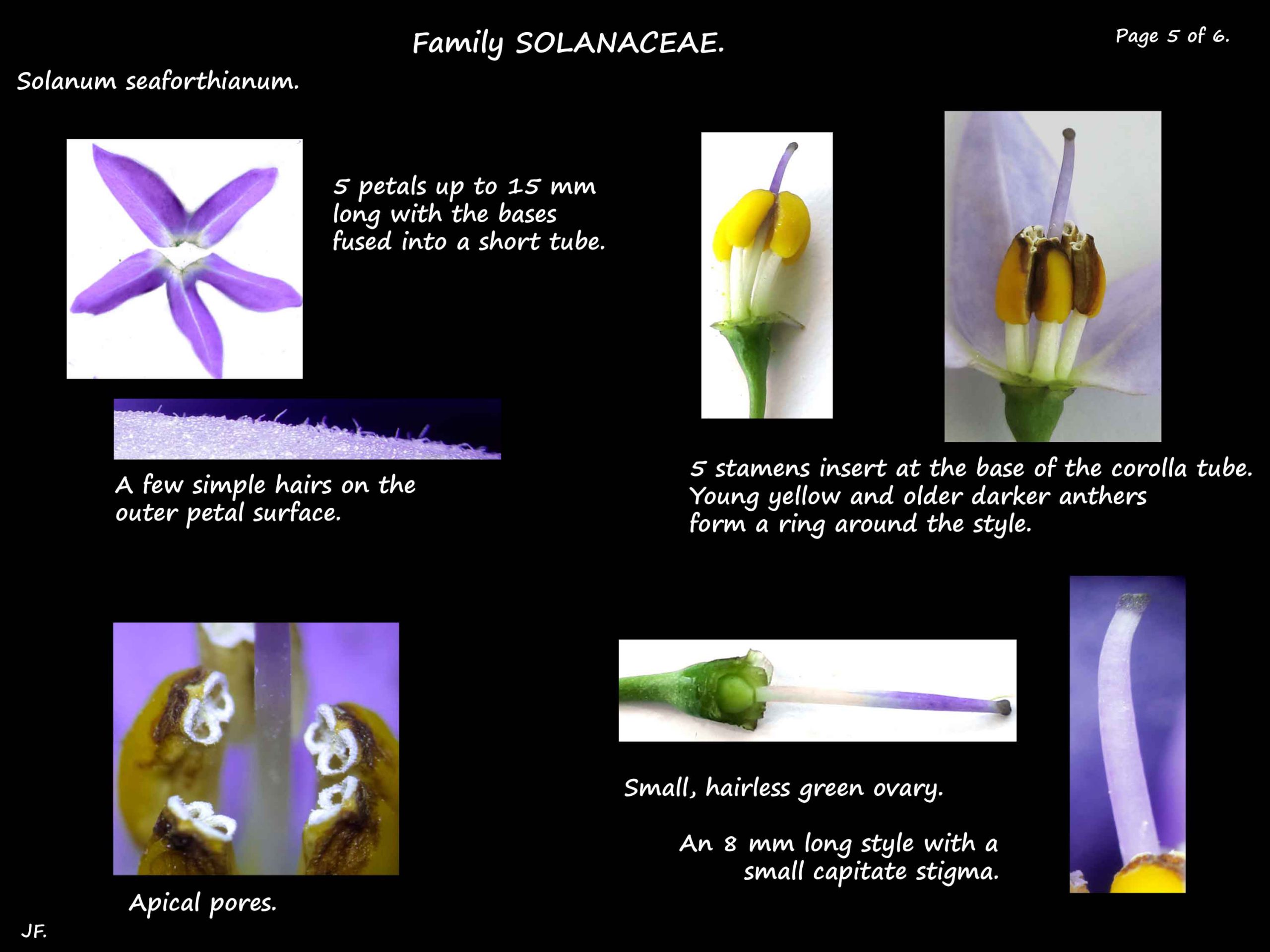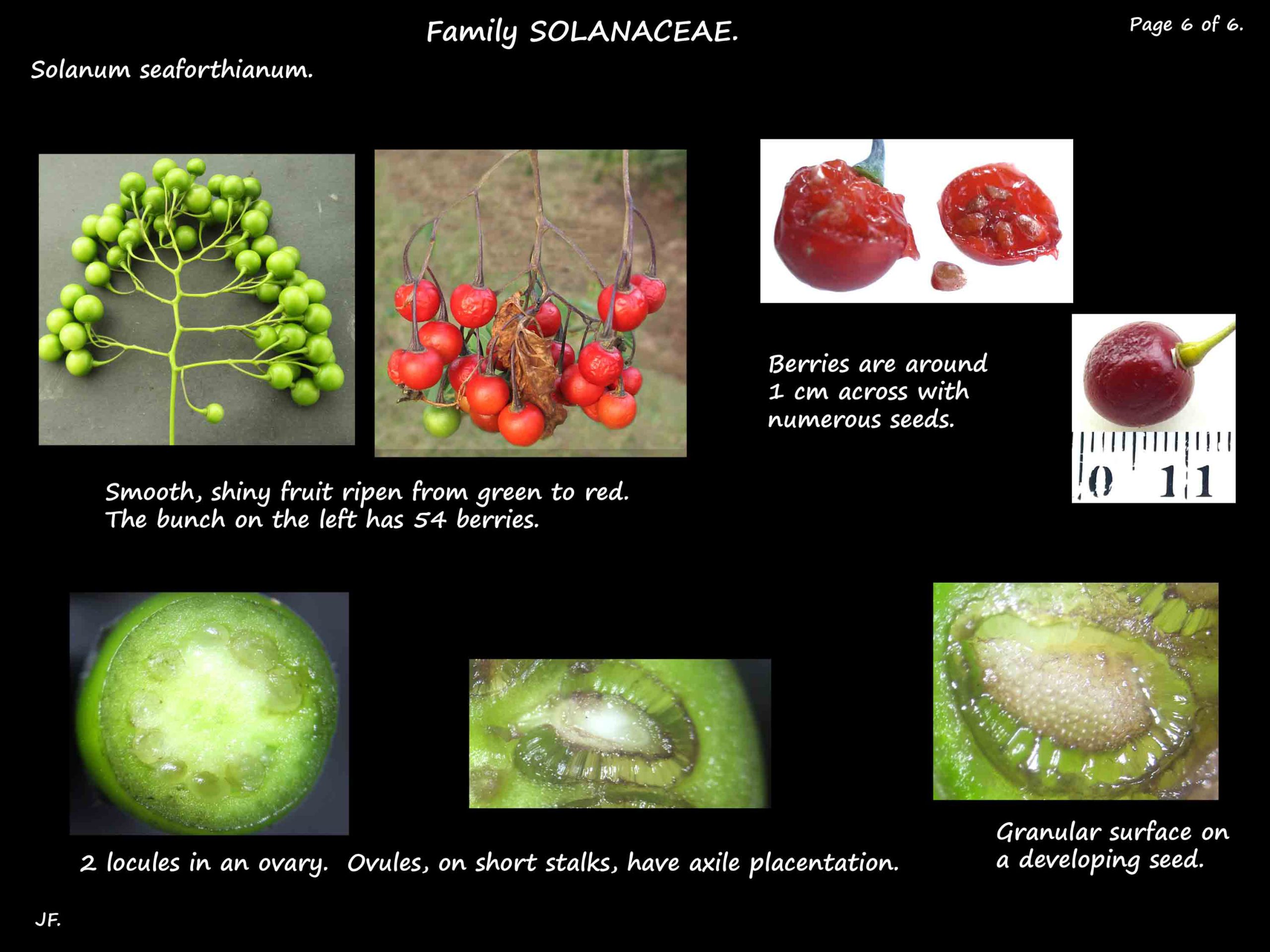Solanum seaforthianum.
Brazilian nightshade is naturalised in Queensland where it is an environmental weed.
It has been used as a garden plant but it can smother other vegetation.
It is a long-lived vine that sprawls over other vegetation or climbs.
The 5 or 6 m long stems are mostly smooth but may have a few simple hairs.
They have no prickles or stellate hairs.
A few of the hairs may have glands.
Older stems are brown and woody.
The alternately arranged leaves are on stalks up to 5 or 6 cm long.
The ovate blades are up to 13 cm long and 11 cm wide although they may be narrower.
Each side has around 4 very irregularly shaped lobes.
The divisions extend to, or almost to, the midrib and the lobe tips are round or pointed.
Both blade surfaces are green and there are no prickles or stellate hairs.
There may be a few simple curved hairs on the edge and on the veins on both surfaces.
The pendant inflorescences are leaf opposed.
On stalks up to 6 cm long each branched inflorescence can have over 50 flowers.
Star-shaped flowers, on stalks around 1 cm long, are up to 3 cm across.
Flowers are bisexual with parts in 5’s.
The calyx tube is only around 1.5 mm long with even shorter lobes.
The bases of the 15 mm long petals are fused.
Petals can be mauve, purple, violet or blue.
The stamens, inserting into the base of the corolla tube, lie beside the style.
The white filaments hold yellow anthers that open by apical pores.
The small ovary is smooth or may have a few simple hairs.
The style, up to 8 mm long, extends well past the anthers.
The fruit are smooth, globular berries around 1 cm across.
They ripen from green to a bright red.
Each has numerous brown to black, flattened seeds up to 3 mm long.
J.F.
